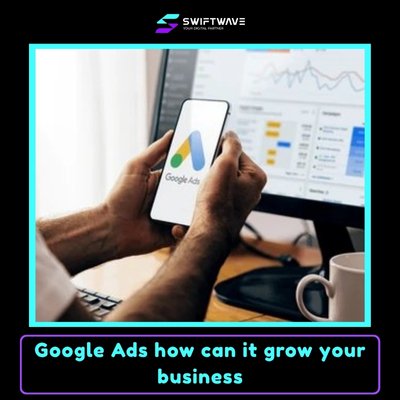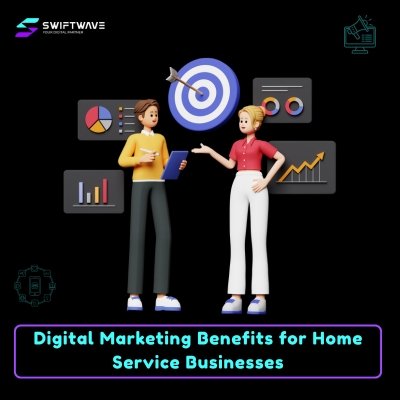Digital Marketing has become the driving force behind brand growth in today’s fast-paced business landscape. Whether you’re running a small startup or managing an established enterprise, being online is no longer optional it’s essential.
Customers no longer discover brands through chance; they search, scroll, and engage through digital channels before making any buying decision.
From SEO to social media and paid advertising, every click and impression matters.
The power of digital marketing lies in its ability to connect businesses directly with the right audience, track measurable results, and scale performance efficiently.
Boost Your Brand with Digital Marketing
In this guide, we will explain how to effectively boost your brand using proven digital marketing strategies that deliver real, data-driven growth.

Why Digital Marketing Matters More Than Ever
Digital marketing is no longer a side channel; it is the main path to business visibility and growth. Every customer today starts their buying journey online—searching for products, comparing reviews, and engaging with brands before deciding where to spend money.
According to global data, more than 5 billion people use the internet, and nearly 90% of them access social media regularly.
This means that most of your potential customers are already online, consuming content, and making decisions based on what they see.
Unlike traditional marketing, which often relies on guesswork and limited tracking, digital marketing gives you full control and measurable data.
You can see exactly how many people saw your post, clicked on your ad, or visited your website. It’s not about spending more; it’s about spending smart.
Digital marketing lets you reach the right audience based on age, location, and interests—something print or TV ads can’t match. Another key reason it matters now more than ever is cost efficiency.
A well-planned digital campaign can generate results at a fraction of the cost of traditional media. Moreover, it builds real-time engagement—customers can message, comment, and interact with your brand instantly.
That level of communication creates trust, loyalty, and faster conversions. Businesses that ignore digital marketing are not just missing opportunities—they’re slowly disappearing from the customer’s radar.
In today’s data-driven economy, visibility means credibility. Without a digital presence, even the best product struggles to grow. That’s why digital marketing has moved from being optional to being absolutely essential.
Core Pillars of Brand Growth Through Digital Marketing
To build a strong and visible brand online, you need a structured approach that focuses on the main pillars of digital marketing. These are the foundation that supports all online growth efforts.
The first pillar is Search Engine Optimization (SEO). SEO is about improving your website so that search engines like Google can easily find it. When someone searches for a product or service similar to yours, you want your brand to appear among the top results.
This is how you attract consistent, organic traffic without paying for every click. SEO includes using relevant keywords, writing clear website content, optimizing images, and ensuring fast loading speed.
A well-optimized website helps your business stay visible 24/7 and builds credibility with users who trust top-ranked results.
The second pillar is Social Media Marketing. Platforms like Facebook, Instagram, LinkedIn, and TikTok are not just for entertainment—they are marketplaces of attention.
Social media helps brands connect with people emotionally. It gives your business a face, a voice, and a personality. Posting regularly, using visuals, and engaging with comments helps you stay in front of your audience daily.
The key is consistency and relevance. You don’t need to post everything; post what matters to your audience—tips, updates, product launches, or real customer experiences. Social media keeps your brand active and human.
The third pillar is Pay-Per-Click Advertising (PPC). PPC campaigns allow you to reach your target audience instantly. Whether it’s Google Ads or Meta Ads, you can promote your offer directly to users who are already looking for it.
Unlike organic growth, PPC gives faster results and more control. You can start with a small budget, test different campaigns, and scale what works. The benefit is precision—you’re not showing ads to everyone, only to those most likely to buy.
The fourth pillar is Email Marketing. Many brands underestimate this, but email marketing is still one of the most powerful tools. It helps you stay connected with customers even after they leave your website.
Through personalized messages, you can announce offers, updates, and reminders directly in their inbox. It’s cost-effective and builds customer retention. Unlike social media, where algorithms decide who sees your content, emails land directly where your audience checks daily—their inbox.
The fifth pillar is Content Marketing. This is the backbone of all other strategies. Every digital channel—from your website to social media—depends on content.
Blogs, videos, graphics, and infographics help explain your product, show your expertise, and keep users engaged. The more valuable your content, the longer people stay connected to your brand.
Content marketing builds long-term authority because people remember brands that educate and help, not just sell.
Together, these five pillars form a complete system that keeps your brand visible, trusted, and growing online.
Building a Digital Marketing Strategy That Actually Works
Having tools is one thing, but using them effectively is what separates successful brands from struggling ones. A working digital marketing strategy begins with a clear understanding of your business goals.
Start by defining what you want—more sales, more website visitors, or stronger brand recognition. Once you know the goal, you can map the path.
The first step is analyzing your current position. Check your website performance, social media pages, and search visibility. Identify where your traffic comes from and what platforms give you results. This helps you avoid wasting resources on areas that don’t perform.
Next, understand your audience. Know who you’re talking to—their age, location, interests, and needs. Use real data from analytics tools to define buyer personas. When you understand your customer, your messaging becomes clearer and more direct.
Then, plan your content and messaging. Each platform has its own tone. LinkedIn needs professional insights, Instagram demands visuals, and YouTube needs storytelling. Your strategy should align content with each platform’s audience. Keep your message consistent but adapt your presentation style.
Budgeting is the next key step. Decide how much you’ll spend on ads, design, and tools. You don’t need a huge budget to get results; you need a smart one. Run test campaigns first to see what converts best, then increase investment where returns are visible.
Another crucial part of your strategy is tracking performance. Use data to measure what’s working—click rates, engagement, conversions, and reach.
Digital marketing is flexible; you can adjust in real-time. If an ad doesn’t perform, stop it and try a new approach immediately. That’s the biggest advantage over traditional marketing—it’s not fixed.
Lastly, focus on long-term consistency. Digital growth doesn’t happen overnight. The brands that win are those that show up regularly, adapt to trends, and stay customer-focused.
Consistency builds trust, and trust converts followers into loyal buyers. A strong digital strategy is not about doing everything—it’s about doing the right things repeatedly.
What You Should Do Right Now
If you haven’t started or your current efforts aren’t giving results, the best time to act is now. Begin by cleaning your digital presence. Update your website with correct information, easy navigation, and a mobile-friendly design. A slow or outdated site pushes away potential customers.
Next, set up your Google Business Profile. This is vital for local visibility. When people search for services in your area, your listing should appear with accurate hours, reviews, and contact information. It improves credibility instantly.
Then, create a simple content calendar. Plan what to post each week across social platforms. Focus on educating and informing your audience. Mix promotional posts with valuable tips or updates about your niche. Keep your visual style consistent so your brand is recognizable at a glance.
After that, run a small paid campaign. Start with one product or service. Test different headlines and images to see what works best. Digital marketing thrives on experimentation—you’ll learn quickly what your audience reacts to.
Also, build an email list. Collect customer emails from your website, in-store visits, or forms. Use that list to share exclusive offers or helpful content regularly. This helps you maintain direct communication without depending on algorithms.
Lastly, monitor everything. Check analytics weekly to understand where your visitors come from and what actions they take. The goal is not just to get traffic, but to turn that traffic into real customers.
Taking these small but structured steps builds momentum. Within months, you’ll see visible improvement in engagement, inquiries, and overall brand awareness. Digital marketing rewards consistency, not perfection. What matters most is starting early and refining as you grow.



